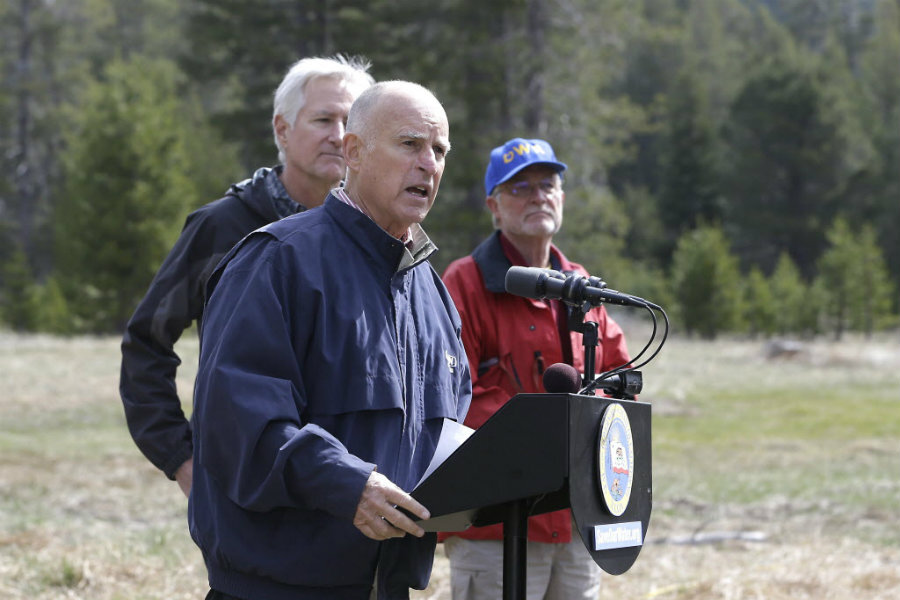California drought: Who might feel new water restrictions the most?
Loading...
In response to California’s disastrous drought, Gov. Jerry Brown on Wednesday ordered the first statewide mandatory water restrictions, with the goal of cutting total water usage by 25 percent.
The new restrictions, deemed necessary in the face of the state’s rapidly depleting reservoirs and shrinking snowpacks, are expected to save about 1.5 million acre-feet of water over the next nine months, according to reports. They are also extensive, and could pave the way for a more consolidated shift towards more efficient, water-conscious lifestyles among California residents.
Gov. Brown’s executive order requires commercial and industrial properties such as golf courses, campuses, and other landscaped areas to immediately reduce water consumption.
It orders the replacement of 50 million square feet of lawn across the state with “drought tolerant landscapes,” in partnership with the Department of Water Resources. It also requires water-efficient drip systems for irrigating landscaping for newly constructed homes and buildings.
Agricultural water suppliers are to report more information on their water usage, and water agencies are to implement new pricing models that encourage conservation. Residents are urged to replace inefficient household devices through a temporary, statewide appliance rebate program.
“It's a different world,” Brown said when he made the announcement at a snowless ski resort in the Sierra Nevada mountains, the LA Times reported. “We have to act differently.”
Brown’s decision comes at a critical time in the state’s 14-month drought emergency, which has affected California’s agriculture, service, and energy industries, as well as individual residents.
Between 2011 and 2014, the drought has cost California ratepayers $1.4 billion more for electricity than in average years, because parts of the state have had to shift from hydropower to natural gas, according to a recent report by the nonprofit think tank Pacific Institute, based in Oakland.
"In an average year, hydropower provides 18 percent of the electricity needed for agriculture, industry, and our homes,” Peter Gleick, the institute’s president and the report’s author, told Capital Public Radio. “Comparatively, in this three-year drought period, hydropower comprised less than 12 percent of total California electricity generation.”
Fallowed fields have also led to lower production, which in turn have led to a drop in exports of non-manufactured goods over the last year, according to research firm Beacon Economics.
In February, Fortune magazine reported:
Last year, more than 99 percent of California’s $43 billion agricultural sector experienced severe, extreme, or exceptional drought.
That translated into costing the state’s agriculture sector around $1.5 billion in losses from unplowed fields, dead livestock, worker layoffs, and rising costs of water.
Californians have tried to adapt. Student groups, communities, and social activists have organized awareness and action campaigns, while city governments have started rebate programs and sanctions aimed at encouraging conservation. In some cases, these have led to changed behavior.
“I think people are just taking it more seriously,” John Moore, an insurance salesman from Sherman Oaks, told The Christian Science Monitor last year. “I see the sign on the highway, ‘Serious drought: [help] save water,’ and so I turn off the water when I’m shaving. I read about farmers fallowing their fields, and something in me just says, ‘Take a shorter shower.’”
But experts, including the State Water Resources Control Board, warned that though helpful, such measures wouldn’t be enough. The new restrictions, along with a $1 billion budget for food supplies, sewage recycling, and environmental protection, are the government’s response.
"We're standing on dry ground and we should be standing on five feet of snow," Brown said, Reuters reported. “This is rationing. We're just doing it through the different water districts.”






